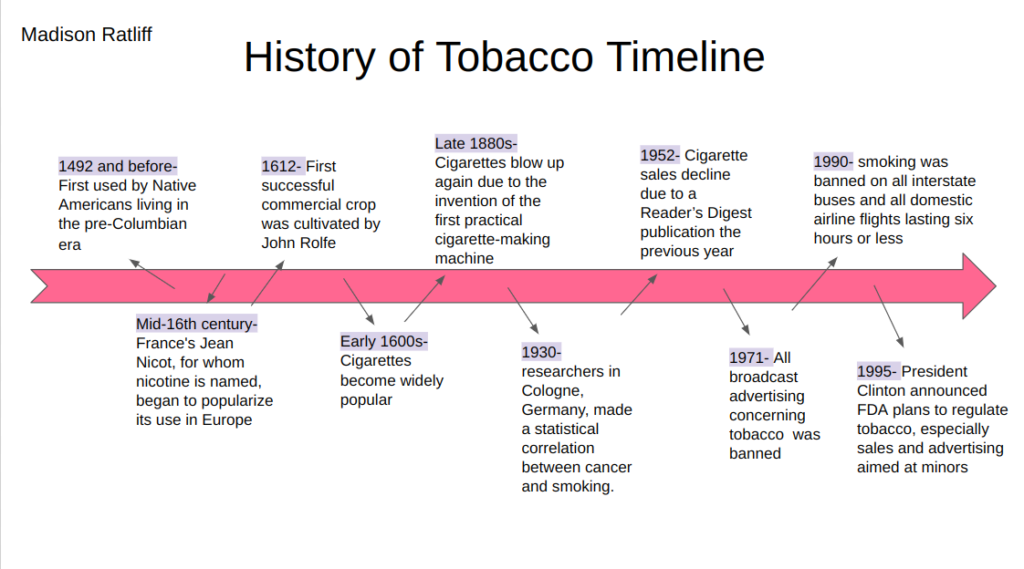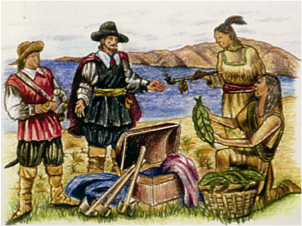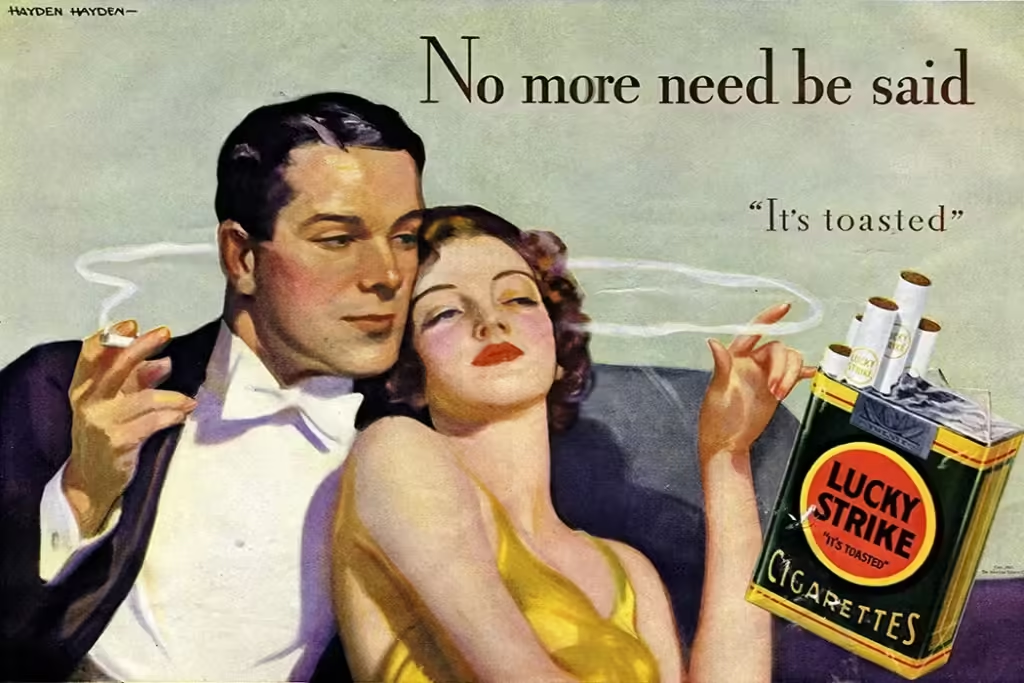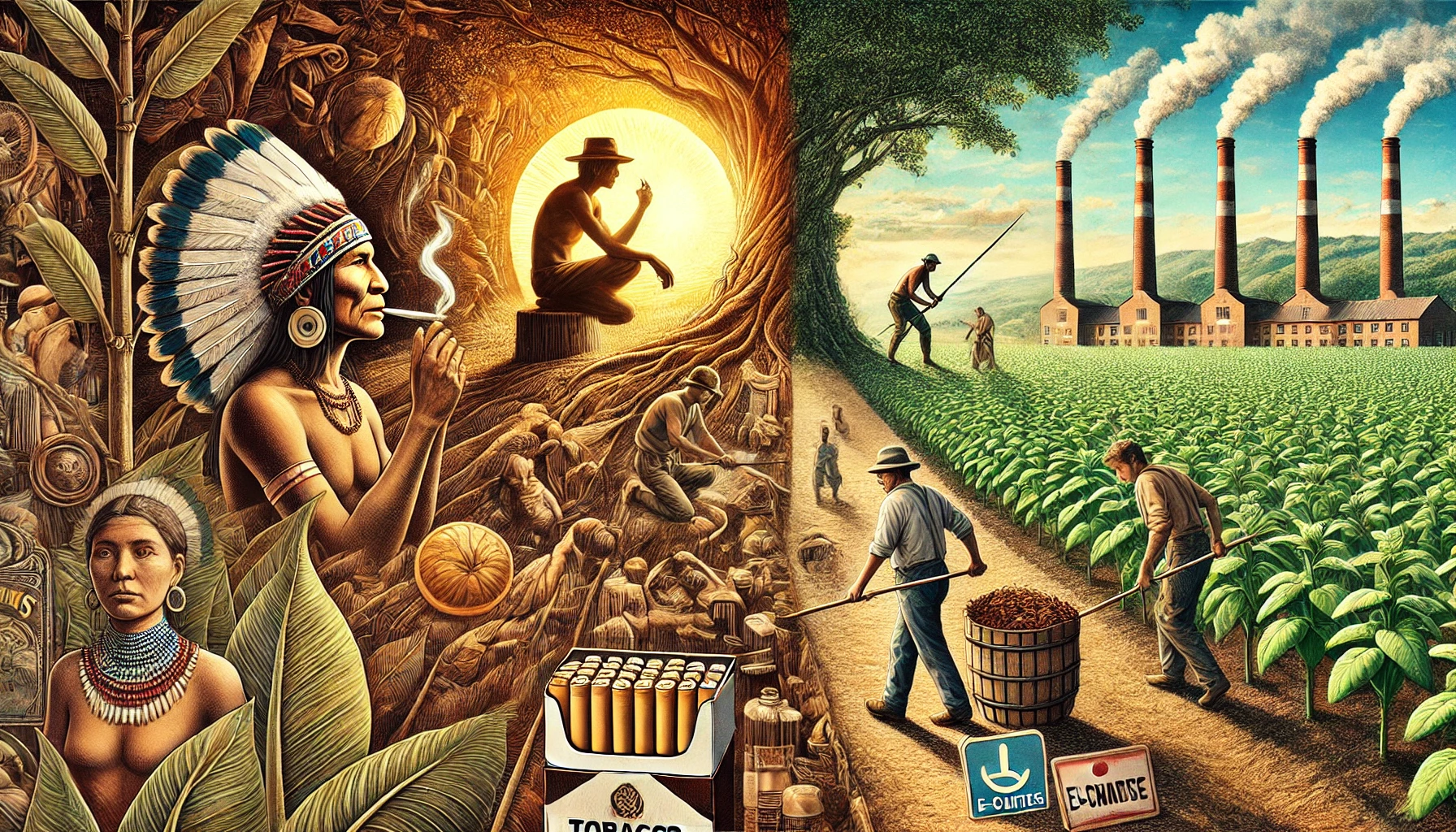The narrative surrounding tobacco encompasses various cultural practices, economic influences, and health consequences. A thorough examination of tobacco’s past sheds light on current issues related to its use and regulation.
Tobacco use history dates back to indigenous practices where native populations utilized tobacco for ceremonial and medicinal purposes. In the same fashion, the history of tobacco in America showcases how European settlers adopted these practices, leading to widespread cultivation. Thus, the tobacco industry flourished, becoming a vital economic driver in the colonies and later in the United States.
As has been noted, the history of smoking evolved alongside societal changes, with tobacco becoming a symbol of status and sophistication. Nevertheless, This rise in popularity also led to growing concerns about health implications; furthermore, these issues have sparked significant debate.
In due time, the history of tobacco control began to take shape as awareness of health risks increased. Governments implemented regulations to curb tobacco use, reflecting a growing understanding of its dangers. For example, the history of tobacco in Europe highlights various legislative efforts aimed at reducing consumption and protecting public health.
Significantly, The modern challenges surrounding tobacco use require a balanced approach that considers cultural significance and health risks. Henceforth, understanding the history of tobacco allows us to navigate these complexities effectively. To conclude, the diverse aspects of tobacco’s history remain pivotal in shaping modern debates regarding its use and regulation.
Discover the Fascinating History of Tobacco and Its Cultural Significance
How did tobacco evolve from indigenous practices to a global phenomenon? Tobacco has a rich history, being used by indigenous peoples of the Americas for ceremonial and medicinal purposes long before its introduction to Europe in the 16th century. This cultural significance laid the groundwork for its later popularity across the globe.
The indigenous peoples of the Americas utilized tobacco in various rituals, recognizing its spiritual and healing properties. They cultivated it with care, integrating it into their social and cultural practices. This deep-rooted connection to tobacco highlights its importance long before European settlers arrived.
Tobacco made its way to Europe in the 16th century, where it quickly gained traction among the aristocracy. The first recorded use of tobacco in England occurred in 1586, thanks to Sir Walter Raleigh, who introduced it after his travels to the Americas. This marked the beginning of a new chapter in the history of tobacco, as it transitioned from a native practice to a fashionable commodity in Europe.
As tobacco use spread, it became associated with social status and sophistication, particularly among the elite. The history of smoking evolved, with tobacco products becoming symbols of luxury and indulgence. However, this rise in popularity also led to growing concerns about health implications; moreover, these issues have sparked significant debate.
In the following centuries, the history of the tobacco industry flourished, with large-scale cultivation and production becoming commonplace. The economic impact of tobacco was significant, driving trade and commerce in various regions. Yet, as the industry expanded, so did the awareness of the health risks associated with tobacco consumption.
Governments began to recognize the dangers of tobacco, leading to the history of tobacco control. Legislative measures aimed at reducing consumption emerged, reflecting a growing public health movement. The history of tobacco in Europe showcases various efforts to regulate its use, highlighting the ongoing struggle between cultural practices and health concerns.
Overall, the multifaceted history of tobacco continues to influence contemporary discussions on its use and regulation. Understanding this complex narrative allows us to navigate the challenges posed by tobacco in modern society.
How Tobacco Transformed America into a Nation of Smokers
How did tobacco play a crucial role in shaping the economy and culture of the American colonies? Tobacco emerged as a key agricultural product in the 17th century, particularly in Virginia and Maryland. This crop significantly influenced the economic landscape of the colonies, driving trade and commerce.
Tobacco cultivation became a significant economic driver in the American colonies, particularly in Virginia and Maryland, during the 17th century. The demand for tobacco soared, leading to the establishment of plantations that relied heavily on labor. This agricultural boom not only shaped the economy but also impacted social structures within the colonies.
The introduction of the cigarette in the 19th century revolutionized tobacco consumption, leading to widespread use and addiction. As tobacco products evolved, they became more accessible to the general public. This shift marked a significant change in the history of tobacco, as smoking became a common practice across various social classes.
Additionally, the history of tobacco advertising played a crucial role in promoting these products. Advertisements often glamorized smoking, portraying it as a symbol of sophistication and allure. This marketing strategy contributed to the normalization of tobacco use, despite the emerging health concerns associated with it.
As the tobacco industry expanded, so did the awareness of its health risks. Governments began to implement regulations aimed at controlling tobacco use. The history of tobacco control reflects a growing public health movement that sought to address the dangers of smoking and tobacco consumption.
Overall, the multifaceted history of tobacco continues to influence contemporary discussions on its use and regulation. Understanding this complex narrative allows us to navigate the challenges posed by tobacco in modern society.

History of Tobacco Reveals the Hidden Battle Against a Deadly Addiction
In the 20th century, many people began to question the safety of tobacco products. This shift in perception stemmed from increasing awareness of health risks associated with smoking. As a result, public discussions about tobacco use became more prevalent.
The 20th century saw a significant shift in public perception of tobacco, with growing awareness of its health risks. In 1964, the U.S. Surgeon General published the first major health report linking smoking to lung cancer. This report marked a turning point in tobacco regulation, prompting widespread concern about the dangers of smoking.
Anti-tobacco movements gained momentum in the late 20th century. Activists worked tirelessly to raise awareness about the health implications of tobacco use. For that reason, many governments implemented smoking bans in public places, reflecting a growing commitment to public health.
In addition, restrictions on tobacco advertising became more common. These measures aimed to reduce the appeal of smoking, especially among young people. The history of tobacco advertising reveals how marketing strategies once glamorized smoking, but now face significant scrutiny.
The history of tobacco control illustrates the ongoing struggle between cultural practices and health concerns. As awareness of the dangers of smoking increased, so did efforts to regulate tobacco use. In Europe, various legislative measures emerged to combat the rising health crisis associated with tobacco consumption.
Overall, the transformation in public perception of tobacco during the 20th century highlights the importance of health awareness. Understanding this history of tobacco allows us to appreciate the complexities surrounding tobacco use today.
Will the Rise of Vaping Change the Fight Against Tobacco
The global effort to combat tobacco use has evolved with the introduction of the Framework Convention on Tobacco Control and the rise of e-cigarettes and vaping. This evolution reflects a growing awareness of the health risks associated with tobacco products. As societies grapple with these challenges, innovative solutions emerge to address the ongoing tobacco crisis.
In 2003, the World Health Organization launched the Framework Convention on Tobacco Control. This initiative aimed to reduce tobacco use globally by promoting comprehensive tobacco control policies. Countries began to implement measures such as advertising bans, graphic warning labels, and public smoking restrictions. These actions marked a significant shift in the history of tobacco control, emphasizing public health over tobacco industry interests.
E-cigarettes and vaping emerged in the 21st century as alternatives to traditional smoking. These products sparked new debates about health and regulation, as many viewed them as safer options. The rise of synthetic nicotine products has introduced new challenges for regulation and public health, complicating efforts to address the health risks associated with these alternatives. The rise of synthetic nicotine reflects changing consumer preferences and technological advancements in the tobacco industry; similarly, it indicates a shift in market dynamics.
In general, the rise of e-cigarettes reflects changing consumer preferences and technological advancements. Many smokers turned to vaping in hopes of reducing health risks associated with traditional tobacco use. This shift highlights the ongoing evolution of the tobacco industry and its response to public health initiatives.
Most important, the Framework Convention on Tobacco Control and the rise of e-cigarettes illustrate the complexities of tobacco regulation; furthermore, they highlight the need for updated policies. Policymakers must balance cultural practices with health concerns while addressing the needs of diverse populations. As the history of tobacco continues to unfold, understanding these dynamics becomes crucial for effective public health strategies.

Discover How the History of Tobacco Has Led to Environmental Catastrophes in Developing Nations
Tobacco farming poses serious environmental challenges and is associated with economic exploitation in developing nations. The impact of tobacco cultivation extends beyond health concerns, affecting ecosystems and communities. Unsustainable farming practices lead to deforestation and soil degradation, threatening biodiversity and local livelihoods.
Tobacco farming has significant environmental impacts, including deforestation and soil degradation due to monoculture practices. This monoculture approach strips the land of nutrients, making it less fertile over time. Consequently, farmers face challenges in sustaining their crops, leading to a cycle of dependency on chemical fertilizers and pesticides.
In developing countries, the tobacco industry often exploits labor, particularly among vulnerable populations. Workers frequently endure poor conditions, low wages, and limited rights. This exploitation highlights the darker side of the tobacco industry, where profit often comes at the expense of human dignity and environmental health.
Tobacco’s agricultural practices have historically intertwined with various economic systems. For instance, in America, tobacco’s rise as a cash crop significantly impacted economic development and social dynamics. Ultimately, This duality continues to shape the industry today, as many farmers struggle to balance economic needs with sustainable practices.
Moreover, the history of tobacco advertising has often masked these issues, promoting tobacco as a glamorous lifestyle choice. Advertisements frequently ignore the environmental and social costs associated with tobacco production. As awareness of these challenges grows, the need for responsible practices becomes increasingly urgent.
To summarize, The environmental and social implications of tobacco farming demand attention. Policymakers must address these issues to create a more sustainable future. By understanding the history of tobacco, we can better navigate the complexities of its impact on society and the environment.
Are Synthetic Nicotine Products the Next Big Health Crisis
How do synthetic nicotine products challenge existing regulations and public health initiatives while cultural attitudes towards tobacco vary globally? The emergence of synthetic nicotine products has created new hurdles for regulatory bodies. These products often evade traditional tobacco regulations, complicating enforcement efforts. Consequently, public health officials face difficulties in addressing the health risks associated with these alternatives. The challenges posed by synthetic nicotine products, cultural attitudes towards tobacco, and economic implications highlight the complexities of tobacco regulation; thus, a multifaceted approach is necessary.
Cultural attitudes towards tobacco vary widely around the world, with some cultures embracing its use for social and ceremonial purposes, while others impose strict prohibitions against it due to health concerns. This disparity complicates global discussions on tobacco regulation and public health strategies. To enumerate, understanding these cultural differences is essential for effective policy-making.
To summarize, The challenges posed by synthetic nicotine products, cultural attitudes towards tobacco, and economic implications highlight the complexities of tobacco regulation. Policymakers must navigate these issues carefully to create effective public health strategies. As the history of tobacco continues to evolve, understanding these dynamics becomes increasingly important.

As We Conclude the History of Tobacco Let Us Reflect on Its Impact
The narrative surrounding tobacco encompasses various cultural practices, economic influences, and health consequences. This journey spans centuries, showcasing tobacco’s evolution from sacred plant to a controversial commodity. Grasping the intricacies of tobacco’s narrative is essential for addressing contemporary challenges related to its use.
Tobacco’s journey began with indigenous peoples who revered it for its ceremonial and medicinal properties. As European settlers arrived, they recognized its economic potential, leading to its cultivation in the American colonies. In America, tobacco’s rise as a cash crop significantly impacted economic development and social dynamics.
The 20th century marked a pivotal shift in public perception; indeed, this shift was influenced by various health reports. Increased awareness of health risks associated with tobacco use led to the rise of anti-tobacco movements. In truth, the history of tobacco control emerged, focusing on reducing consumption and promoting public health. Presently, the introduction of e-cigarettes and vaping products complicates this narrative, presenting new challenges for regulation and public health.
In the final analysis, the environmental and economic implications of tobacco farming remain pressing issues. The industry faces scrutiny for its impact on developing nations and the exploitation of labor. Thus, understanding the history of the tobacco industry is crucial for addressing these ongoing challenges and shaping future policies.
To summarize, The history of tobacco encapsulates a rich tapestry of cultural significance, economic impact, and health concerns; therefore, understanding this history is crucial for future discussions.
Did You Know Tobacco Was Once a Currency in Colonial America
Here’s a fascinating random fact about tobacco history. Tobacco served as a form of currency in colonial America. This practice began in the 17th century, particularly in Virginia and Maryland. Farmers used tobacco to pay for goods and services, which emphasized its economic importance. Of course, this practice reflected the high demand for tobacco during that time. The history of tobacco use shows how it became a staple crop. Accordingly, tobacco cultivation shaped the economy and social structures of the colonies. Important to realize, this economic reliance on tobacco led to the establishment of plantations. As can be seen, the history of the tobacco industry flourished alongside this currency use. Lastly, this unique aspect of tobacco history highlights its multifaceted role in American society.
FAQs
What can you tell me about the tobacco use history among indigenous peoples?
Tobacco use history among indigenous peoples includes ceremonial and medicinal practices. They revered tobacco for its spiritual significance.
How did tobacco evolve in the history of tobacco in America?
Tobacco evolved significantly in America, becoming a vital cash crop. This transformation shaped the economy and social structures.
Can you explain the history of smoking and its cultural significance?
The history of smoking shows tobacco as a symbol of status. It became associated with sophistication among the elite.
What role did the history of tobacco advertising play in its popularity?
The history of tobacco advertising glamorized smoking. Advertisements portrayed tobacco as a luxurious lifestyle choice, increasing its appeal.
How did the history of tobacco control begin to take shape?
The history of tobacco control began as awareness of health risks increased. Governments implemented regulations to curb tobacco use.
What were the significant changes in the history of tobacco in Europe?
In Europe, the history of tobacco includes various legislative efforts. These aimed to reduce consumption and protect public health.
How did the introduction of e-cigarettes impact the history of tobacco?
E-cigarettes introduced new challenges in the history of tobacco. They sparked debates about health risks and regulation.
What environmental issues arise from the history of tobacco farming?
Tobacco farming leads to deforestation and soil degradation. These practices threaten biodiversity and local livelihoods, especially in developing nations.
How do synthetic nicotine products challenge existing tobacco regulations?
Synthetic nicotine products complicate enforcement efforts. They often evade traditional tobacco regulations, creating new public health challenges.
Why is understanding the history of tobacco important for future discussions?
Understanding the history of tobacco is crucial for addressing ongoing challenges. It helps shape effective public health policies and strategies.
Come Visit Us
We have three fantastic locations we’d love to invite you to! If you’re in the Chicagoland area, you can come chill with us at either our Grayslake or Schaumburg locations. Alternatively, if you’re in Wisconsin, stop by and visit us at our Kenosha lounge. Please note that you must be 21+ to enter with a valid ID. We hope to see you soon!


